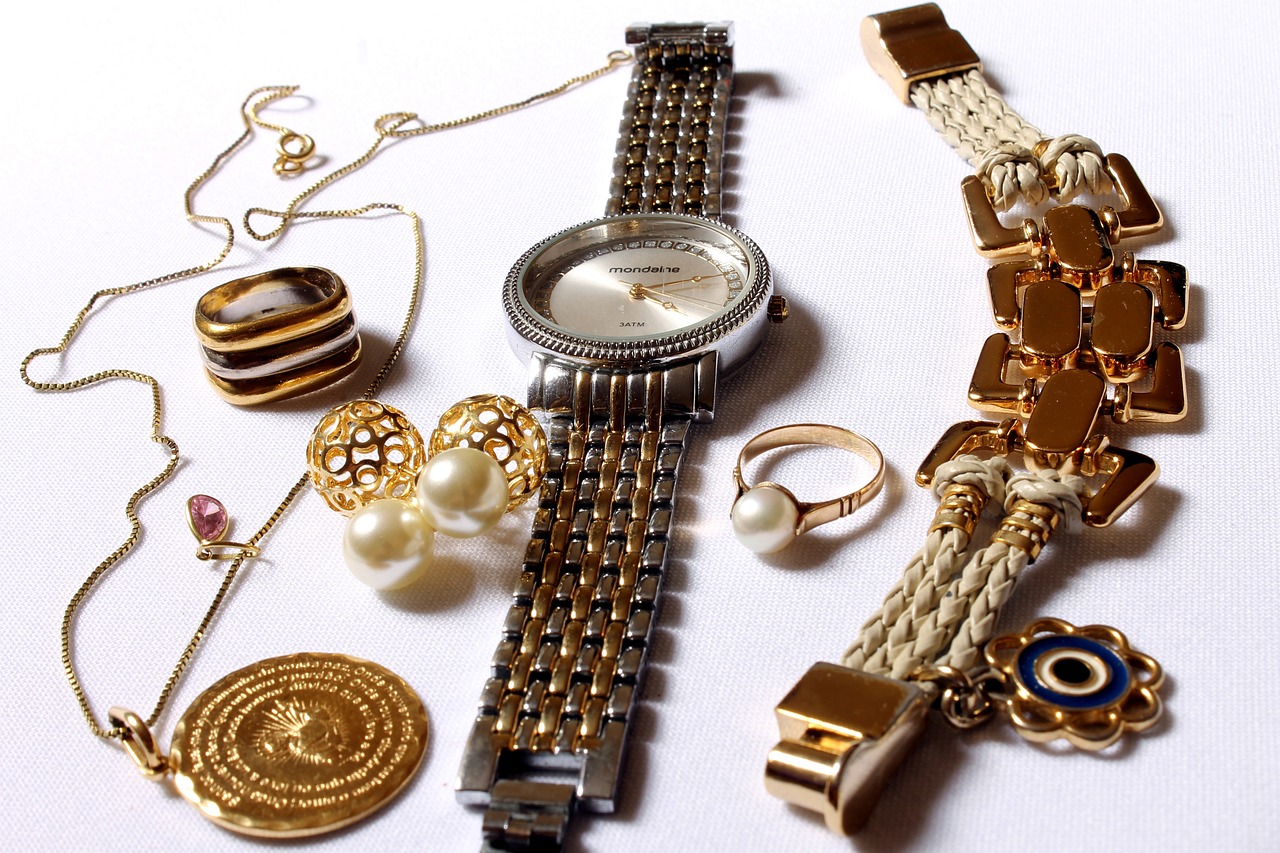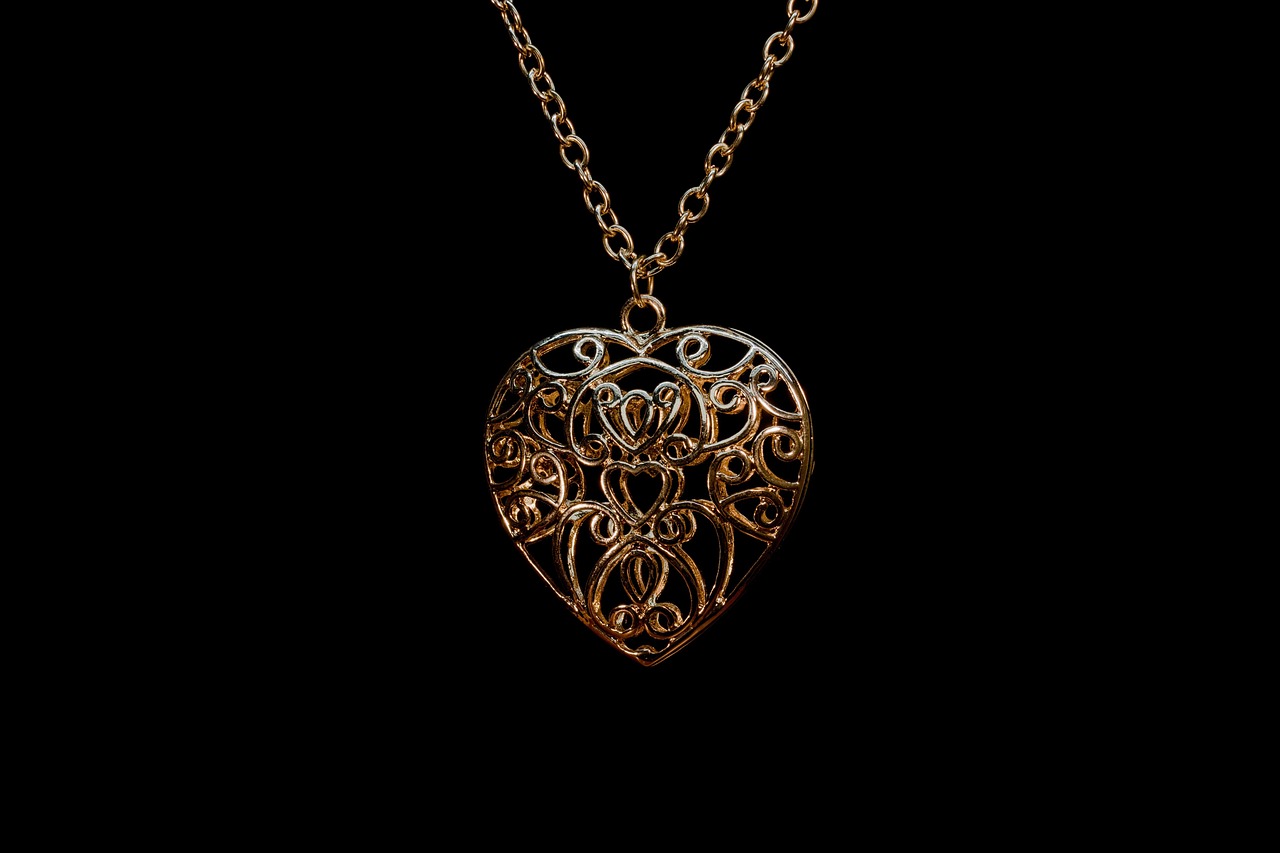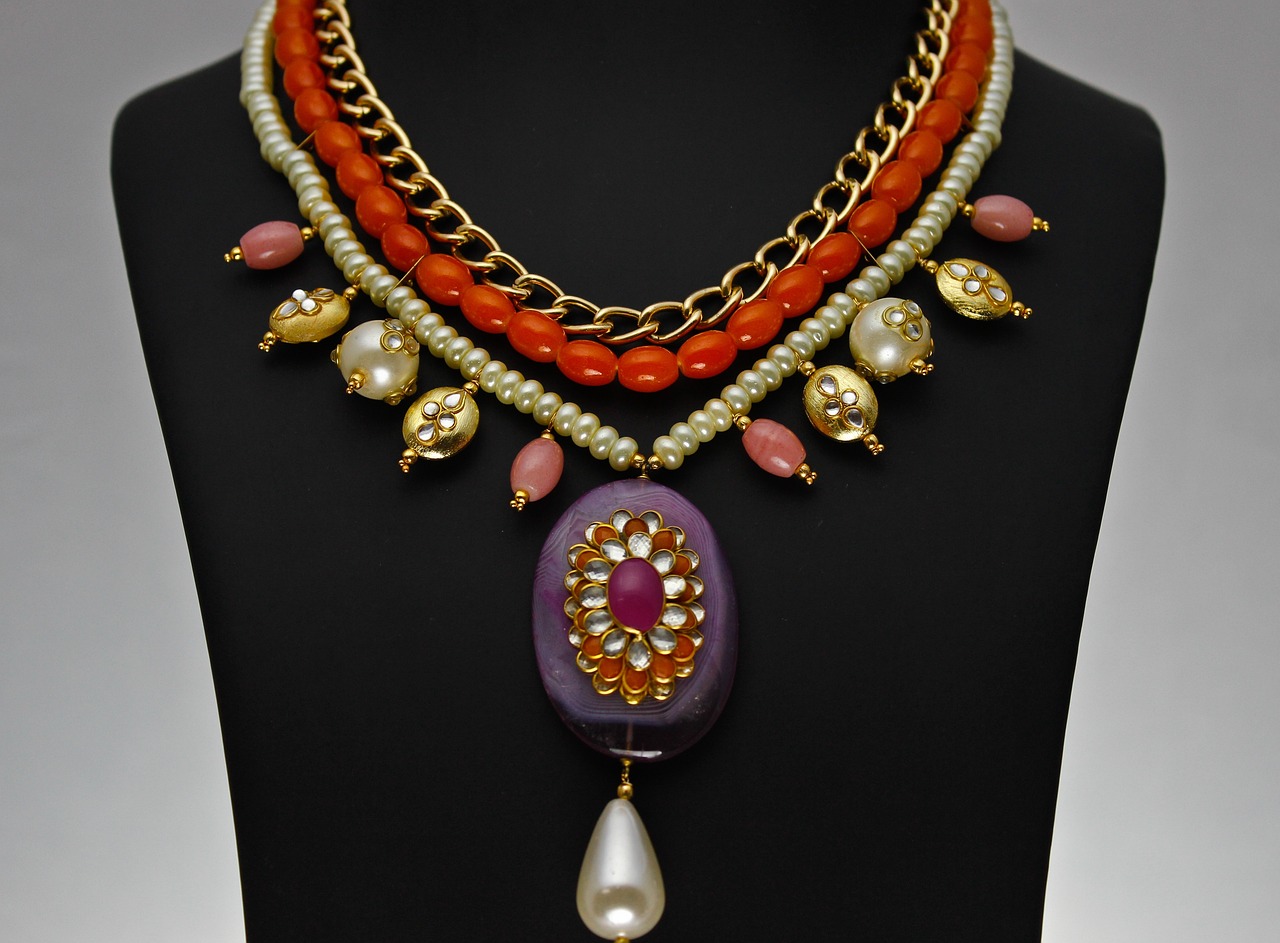This article delves into the critical aspects necessary for determining whether your jewelry is hypoallergenic. It provides valuable insights into various materials, effective testing methods, and expert opinions to ensure a safe wearing experience for individuals with sensitive skin.
Understanding Hypoallergenic Jewelry
Hypoallergenic jewelry is specifically crafted to reduce the likelihood of allergic reactions. Understanding what hypoallergenic means is essential, especially for those with sensitive skin, as it can significantly impact comfort and health.
Common Allergens in Jewelry
Many materials used in jewelry can trigger allergic reactions. Below are some of the most prevalent allergens:
- Nickel: Often found in various jewelry types, nickel is notorious for causing skin irritation.
- Cobalt: Another metal that can lead to allergic reactions, often used in alloys.
- Chromium: Present in some jewelry pieces, it can also be a source of irritation.
Identifying Hypoallergenic Materials
Not all jewelry labeled as hypoallergenic is genuinely safe. To identify truly hypoallergenic materials, look for:
- Titanium: Known for its strength and hypoallergenic properties.
- Surgical Stainless Steel: A safer alternative for sensitive skin.
- Safe Non-Metal Options: Materials such as silicone and plastic can also be excellent choices.
Testing Your Jewelry for Hypoallergenic Properties
To ensure your jewelry is hypoallergenic, consider the following testing methods:
- Home Testing: Simple at-home tests can help you determine the hypoallergenic nature of your jewelry.
- Professional Testing: For more reliable results, seek out professional testing services.
Expert Tips for Choosing Hypoallergenic Jewelry
Choosing the right jewelry can be challenging. Here are some expert tips:
- Reading Labels: Always check product labels for hypoallergenic claims.
- Consulting Jewelers: Don’t hesitate to discuss your needs with jewelers for personalized advice.
Conclusion: Making Informed Choices
Being knowledgeable about hypoallergenic jewelry is crucial for avoiding allergic reactions. By understanding the materials, testing methods, and expert recommendations, you can make informed choices that ensure comfort and safety in your jewelry selection.

Understanding Hypoallergenic Jewelry
Hypoallergenic jewelry is specifically crafted to reduce the risk of allergic reactions, making it a crucial choice for individuals with sensitive skin. But what does hypoallergenic really mean? In essence, it refers to materials that are less likely to provoke an allergic response, which is particularly important for those who experience discomfort or irritation from certain metals.
For many, wearing jewelry is a form of self-expression. However, for those with sensitive skin, the wrong choice can lead to redness, itching, and even rashes. This is why understanding the concept of hypoallergenic jewelry is vital. It allows individuals to enjoy their accessories without the fear of adverse reactions.
When we talk about hypoallergenic materials, we primarily refer to metals that have a lower chance of causing allergies, such as titanium, surgical stainless steel, and platinum. These materials are not only durable but also safe for most skin types. In contrast, metals like nickel can trigger allergic reactions in a significant number of people, making it essential to avoid them in jewelry.
Moreover, hypoallergenic jewelry is not limited to metals. There are also non-metal options available, such as silicone and plastic, which can be great alternatives for those who are particularly sensitive. These materials provide a lightweight and comfortable option without compromising style.
In conclusion, understanding hypoallergenic jewelry is essential for anyone with sensitive skin. By choosing the right materials, individuals can enjoy beautiful accessories without the worry of allergic reactions. Always look for hypoallergenic labels and consult with jewelers to ensure that your jewelry choices align with your skin’s needs.

Common Allergens in Jewelry
Jewelry can enhance our appearance and express our personal style, but for many people, it can also trigger allergic reactions. Understanding the common allergens found in jewelry is essential for those with sensitive skin. In this section, we will explore the most prevalent irritants, helping you make informed choices when selecting your accessories.
- Nickel: Perhaps the most notorious allergen, nickel is commonly used in jewelry making due to its durability and affordability. Unfortunately, it can cause severe skin reactions in sensitive individuals. Symptoms may include redness, itching, and swelling.
- Cobalt: Cobalt is another metal that can provoke allergic reactions. Often found in alloys, it can cause similar symptoms to nickel allergy. Individuals sensitive to cobalt should opt for jewelry that explicitly states it is cobalt-free.
- Chromium: This metal, often used in plating, can also be a source of irritation. Chromium allergies may manifest as contact dermatitis, leading to discomfort and skin lesions.
- Brass: Although brass is a popular choice for costume jewelry, it contains copper and zinc, both of which can cause allergic reactions in some people. Those with metal sensitivities should approach brass jewelry with caution.
- Gold and Silver Alloys: While pure gold and silver are generally hypoallergenic, many jewelry pieces are made from alloys that contain nickel or other irritants. Always check the metal composition before purchasing.
By being aware of these common allergens, you can better protect yourself from potential allergic reactions. When shopping for jewelry, always look for pieces labeled as hypoallergenic or made from safe materials. Your skin will thank you!
Nickel: The Main Culprit
Nickel is a metal that is frequently found in various types of jewelry, making it one of the most common allergens for many individuals. This section aims to delve into the reasons why nickel is problematic and offers practical advice on how to avoid it in your accessories.
Many people are unaware that nickel can cause allergic reactions, which can manifest as skin irritation, rashes, and even eczema. The reason nickel is such a prevalent allergen is due to its widespread use in jewelry-making, particularly in items that are less expensive. When nickel is combined with other metals, it can lead to an increased risk of allergic reactions, especially for those with sensitive skin.
To prevent nickel allergies, consider the following strategies:
- Choose Nickel-Free Jewelry: Look for jewelry specifically labeled as nickel-free or hypoallergenic. Materials such as titanium, platinum, and surgical stainless steel are excellent alternatives.
- Check for Coatings: Some jewelry is coated with a protective layer that can reduce nickel exposure. However, these coatings can wear off over time, so it’s essential to be cautious.
- Avoid Cheap Jewelry: Low-cost jewelry often contains higher levels of nickel. Investing in quality pieces can significantly reduce the risk of allergic reactions.
- Consult with Jewelers: When in doubt, consult with a jeweler about the materials used in a piece. They can provide valuable insights and help you make informed decisions.
Recognizing the signs of a nickel allergy is equally important. Symptoms may include redness, itching, and swelling at the site of contact. If you experience these symptoms, it is advisable to remove the jewelry immediately and consult a healthcare professional.
In conclusion, being aware of the risks associated with nickel in jewelry can help you make safer choices. By opting for alternatives and being mindful of the materials used in your accessories, you can enjoy beautiful jewelry without the worry of allergic reactions.
Signs of Nickel Allergy
Recognizing the signs of a nickel allergy is essential for anyone who suspects they may have a sensitivity to this common metal. Nickel is frequently found in various types of jewelry, including earrings, necklaces, and bracelets, making it crucial to identify symptoms early on to avoid further irritation.
Individuals with a nickel allergy may experience a range of symptoms, which typically manifest on the skin. The most common signs include:
- Redness and Inflammation: Affected areas may become red and swollen shortly after contact with nickel-containing items.
- Itching and Burning Sensation: Many individuals report intense itching or a burning feeling at the site of contact.
- Rash Development: A rash may appear, often resembling eczema or hives, and can spread beyond the initial contact area.
- Blistering: In more severe cases, blisters may form, leading to discomfort and potential secondary infections if scratched.
- Dry, Cracked Skin: Chronic exposure can lead to dry, flaky skin that may crack and become painful.
These symptoms may not appear immediately; they can take hours or even days to develop after exposure. It’s important to note that the severity of the reaction can vary significantly from person to person, depending on individual sensitivity and the amount of nickel exposure.
If you suspect you have a nickel allergy, it is advisable to consult a healthcare professional for an accurate diagnosis and management plan. Avoiding jewelry that contains nickel and opting for hypoallergenic alternatives can significantly reduce the risk of allergic reactions and improve overall skin health.
In conclusion, being aware of the signs of a nickel allergy is vital for anyone who frequently wears jewelry. By recognizing these symptoms early, you can take proactive steps to protect your skin and maintain your comfort.
Alternatives to Nickel
are essential for individuals with nickel allergies, as exposure can lead to uncomfortable and sometimes severe allergic reactions. Fortunately, there are various hypoallergenic metals and materials available that provide safe options for those with sensitive skin.
Understanding Hypoallergenic Options
Hypoallergenic jewelry is crafted to minimize the risk of allergic reactions. It is crucial to choose materials that do not contain nickel or other common allergens. Here are some safe alternatives:
- Titanium: Known for its strength and lightweight properties, titanium is a popular choice for hypoallergenic jewelry. It does not rust or corrode, making it ideal for everyday wear.
- Surgical Stainless Steel: This type of stainless steel is specifically designed for medical use, ensuring it is free from nickel and other allergens. It is durable and resistant to tarnishing.
- Gold and Platinum: Pure gold (24k) and platinum are naturally hypoallergenic. However, it’s essential to check for alloys in lower karat gold, as they may contain nickel.
- Silicone: A non-metal alternative, silicone is flexible, lightweight, and available in various colors. It is an excellent option for those who prefer a casual style.
- Plastic and Resin: These materials are often used in costume jewelry and are generally safe for sensitive skin. They come in numerous designs and are budget-friendly.
Conclusion
Choosing jewelry made from hypoallergenic materials is vital for individuals with nickel allergies. By opting for alternatives like titanium, surgical stainless steel, and non-metal options, you can enjoy beautiful accessories without the fear of allergic reactions. Always consult with jewelers to ensure the materials used in your jewelry are safe for your skin.
Other Allergenic Metals
When it comes to jewelry, many individuals with sensitive skin often find themselves struggling with allergic reactions. While nickel is widely recognized as a primary allergen, it is crucial to understand that other metals can also trigger adverse responses. This section delves into the effects of cobalt and chromium, two metals that can pose risks for sensitive individuals.
Cobalt is a metal commonly used in various alloys and can be found in some types of jewelry. For individuals who are sensitive to cobalt, exposure can lead to skin irritation, rashes, and even dermatitis. Symptoms may occur shortly after contact and can persist if the exposure continues. It is essential for those with known sensitivities to avoid jewelry containing cobalt to prevent these uncomfortable reactions.
Similarly, chromium is another metal that can cause allergic reactions. Often used in plating and as a component in stainless steel, chromium can be a hidden culprit in many jewelry pieces. Individuals allergic to chromium may experience redness, itching, and swelling upon contact. The severity of these reactions can vary, with some experiencing mild discomfort while others may have more severe symptoms.
| Metal | Common Uses | Potential Reactions |
|---|---|---|
| Cobalt | Alloys, jewelry | Skin irritation, dermatitis |
| Chromium | Plating, stainless steel | Redness, itching, swelling |
For individuals with sensitivities, it is vital to carefully read labels and inquire about the materials used in jewelry. Opting for hypoallergenic alternatives, such as titanium or surgical stainless steel, can significantly reduce the risk of allergic reactions. By being informed about the potential allergens in jewelry, individuals can make safer choices that protect their skin and overall well-being.

Identifying Hypoallergenic Materials
When it comes to selecting jewelry, especially for those with sensitive skin, understanding hypoallergenic materials is crucial. Not all jewelry labeled as hypoallergenic guarantees safety from allergic reactions. This section will guide you through the process of identifying truly hypoallergenic materials, ensuring you make informed choices.
What Does Hypoallergenic Mean?
The term hypoallergenic suggests that a product is less likely to cause an allergic reaction. However, it is important to note that this label is not regulated, meaning that manufacturers can use it without strict guidelines. Therefore, knowing which materials are genuinely hypoallergenic is essential for your health and comfort.
Common Hypoallergenic Materials
- Titanium: This metal is highly biocompatible and resistant to corrosion, making it a top choice for sensitive skin.
- Surgical Stainless Steel: Often used in medical applications, this alloy contains minimal nickel and is less likely to cause reactions.
- Gold and Platinum: High-quality gold (14k or higher) and platinum are generally safe, as they contain fewer alloying metals that can trigger allergies.
- Silicone: A great non-metal alternative, silicone is flexible, comfortable, and hypoallergenic.
- Plastic: While not as durable, high-quality plastics can be a safe choice for jewelry, especially for children.
Identifying Non-Hypoallergenic Materials
To avoid allergic reactions, you should be cautious of the following materials:
- Nickel: The most common allergen found in jewelry.
- Cobalt: Often used in alloys, it can also provoke skin reactions.
- Lead: Found in some costume jewelry, it is highly toxic and should be avoided.
Conclusion
Understanding and identifying hypoallergenic materials is essential for anyone with sensitive skin. By choosing jewelry made from high-quality materials such as titanium, surgical stainless steel, and certain plastics, you can enjoy your accessories without the worry of allergic reactions. Always check product descriptions and consult with jewelers to ensure you’re making safe choices.
Best Metals for Hypoallergenic Jewelry
When it comes to selecting jewelry for sensitive skin, understanding the is crucial. Certain metals are less likely to cause allergic reactions, making them ideal choices for those prone to skin irritations. Below is a detailed look at some of the top hypoallergenic metals.
- Titanium: This metal is renowned for its strength and lightweight properties. It is completely nickel-free and is often used in body piercings and surgical applications. Titanium’s biocompatibility makes it a top choice for individuals with sensitive skin.
- Surgical Stainless Steel: Often referred to as 316L stainless steel, this metal is resistant to tarnishing and corrosion. It contains minimal nickel, which significantly reduces the risk of allergic reactions. Surgical stainless steel is commonly used in medical devices, making it a safe option for jewelry.
- Gold: While pure gold (24K) is hypoallergenic, many gold jewelry pieces are alloyed with other metals. Opting for 14K or 18K gold that is labeled as nickel-free can provide a safer alternative for sensitive skin.
- Platinum: This precious metal is naturally hypoallergenic and does not tarnish. Its durability and resistance to wear make it a fantastic investment for long-lasting jewelry.
- Niobium: Similar to titanium, niobium is a highly biocompatible metal. It’s often anodized to create colorful finishes and is an excellent choice for body jewelry.
In summary, when selecting hypoallergenic jewelry, consider metals such as titanium, surgical stainless steel, gold, platinum, and niobium. These options not only minimize the risk of allergic reactions but also provide stylish and durable alternatives for everyday wear.
Safe Non-Metal Options
When it comes to choosing jewelry, many people with sensitive skin seek hypoallergenic options to avoid allergic reactions. While metals are often the focus, there are also safe non-metal alternatives that can provide stylish and comfortable choices. This section will explore some of the most popular non-metal materials used in jewelry, including silicone and plastic, which are excellent for those looking for hypoallergenic options.
Silicone Jewelry
Silicone has gained popularity in recent years as a versatile material for jewelry. It is soft, flexible, and durable, making it an ideal choice for various types of accessories, from bracelets to earrings. One of the most significant advantages of silicone is its hypoallergenic properties, which means it is unlikely to cause skin irritation. Additionally, silicone jewelry comes in a wide range of colors and designs, allowing wearers to express their personal style without compromising comfort.
Plastic Jewelry
Another excellent non-metal option is plastic, which can be found in many forms, including acrylic and resin. Plastic jewelry is lightweight and often more affordable than metal alternatives. Like silicone, plastic is also hypoallergenic, making it suitable for sensitive skin. Furthermore, plastic jewelry can be crafted into intricate designs and vibrant colors, making it a fun and fashionable choice for all occasions.
Benefits of Non-Metal Jewelry
- Affordability: Non-metal jewelry is often more budget-friendly compared to precious metals.
- Variety: There is a vast range of styles and colors available, catering to all tastes.
- Comfort: Lightweight materials like silicone and plastic provide all-day comfort.
In conclusion, when selecting jewelry, considering non-metal options like silicone and plastic can be a smart choice for those with sensitive skin. These materials not only offer hypoallergenic benefits but also provide a wide array of styles and designs to suit any occasion.

Testing Your Jewelry for Hypoallergenic Properties
When it comes to wearing jewelry, especially for individuals with sensitive skin, ensuring that your pieces are hypoallergenic is crucial. Testing your jewelry for hypoallergenic properties can help you avoid uncomfortable allergic reactions. In this section, we will explore various methods for testing jewelry both at home and in professional settings.
Understanding whether your jewelry is hypoallergenic can be achieved through several testing methods. These methods can be categorized into home testing and professional testing, each offering unique advantages.
For those who prefer a DIY approach, several simple tests can help you gauge the hypoallergenic nature of your jewelry:
- Patch Test: Apply a small piece of jewelry to a discreet area of skin, such as the inner wrist, for 24 hours. If redness or irritation occurs, the piece may contain allergens.
- Acid Test: Using a small drop of vinegar or lemon juice, apply it to the metal. If the metal changes color, it may contain nickel or other reactive materials.
- Magnet Test: Hypoallergenic metals like titanium and surgical stainless steel are non-magnetic. If your jewelry is attracted to a magnet, it likely contains nickel or other alloys.
For those seeking more accurate results, professional testing services are highly recommended. These services can provide detailed analyses of the metal composition in your jewelry:
- Jewelry Appraisers: Certified appraisers can conduct tests to determine the metal content and identify any potential allergens.
- Laboratory Analysis: Some jewelry stores offer laboratory testing, where samples are analyzed for specific metal content using advanced techniques.
In conclusion, whether you choose to test your jewelry at home or seek professional assistance, being proactive about identifying hypoallergenic properties is essential for maintaining skin health. Always prioritize your comfort and safety when selecting jewelry.
Home Testing Methods
When it comes to ensuring the safety of your jewelry for sensitive skin, can be exceptionally useful. These simple and effective techniques allow you to quickly assess whether your jewelry is hypoallergenic, providing peace of mind before wearing your favorite pieces.
Here are some easy-to-follow methods for testing your jewelry at home:
- The Water Test: Take a small bowl of water and submerge your jewelry piece. If you notice any discoloration or rust forming, it may indicate that the item contains non-hypoallergenic metals, such as nickel.
- The Skin Test: Wear the jewelry for a few hours and observe your skin’s reaction. If you experience any redness, itching, or irritation, it’s likely that the jewelry contains allergens.
- The Scratch Test: Gently scratch an inconspicuous area of the jewelry with a metal object. If the surface scratches easily and reveals a different color beneath, this may suggest the presence of lower-quality metals.
- The Vinegar Test: Soak a cotton ball in white vinegar and rub it on the jewelry. If the cotton ball turns green, this indicates that the jewelry contains copper, which can cause allergic reactions in some individuals.
These methods are straightforward and can be done in the comfort of your home. However, while they can provide initial insights, they are not foolproof. For a more accurate assessment, consider seeking professional testing services that can analyze the materials in your jewelry in detail.
In conclusion, utilizing these home testing methods can help you determine the hypoallergenic nature of your jewelry. It empowers you to make informed decisions, ensuring that your accessories are safe for your skin.
Professional Testing Services
When it comes to ensuring that your jewelry is truly hypoallergenic, can provide the most reliable results. This section will guide you through what to expect from these services and how to find reputable testing facilities.
Professional testing typically involves a thorough analysis of the materials used in your jewelry. Experts utilize advanced techniques to identify potential allergens, ensuring that the items you wear are safe for your skin. Here’s what you can expect:
- Comprehensive Material Analysis: Testing services will examine the composition of your jewelry, focusing on common allergens such as nickel, cobalt, and chromium.
- Testing Methods: Expect to see various testing methods employed, including spectroscopy, which can accurately determine the metal content.
- Detailed Reports: After testing, you will receive a detailed report outlining the findings, including any allergens detected and their concentrations.
Finding reputable testing facilities is crucial for obtaining accurate results. Here are some tips to help you locate trustworthy services:
- Research and Reviews: Look for facilities with positive reviews from previous clients. Online platforms and forums can provide valuable insights.
- Accreditation: Ensure the testing lab is accredited by relevant authorities, as this indicates adherence to industry standards.
- Expertise: Choose labs that specialize in jewelry testing, as they will have the necessary equipment and experience to provide reliable results.
In conclusion, utilizing professional testing services can significantly enhance your confidence in the hypoallergenic claims of your jewelry. By following the guidelines outlined above, you can ensure that your accessories are safe for your sensitive skin.

Expert Tips for Choosing Hypoallergenic Jewelry
Choosing the right jewelry can be a daunting task, especially for those with sensitive skin or allergies. Understanding the nuances of hypoallergenic jewelry is essential to ensure that your accessories not only look good but also feel comfortable. Here are some expert tips to help you select hypoallergenic pieces that suit your personal style and needs.
- Know Your Materials: Familiarize yourself with hypoallergenic materials such as titanium, stainless steel, and gold that are less likely to cause allergic reactions. Avoid jewelry that contains nickel, as it is a common allergen.
- Check for Certifications: Look for jewelry that has been certified as hypoallergenic. Many reputable brands will provide information about their materials and any allergy testing they have undergone.
- Consider Your Lifestyle: Think about when and how often you will wear the jewelry. For everyday wear, opt for durable materials that can withstand daily activities without causing irritation.
- Pay Attention to Finish: The finish of the jewelry can also play a role in its hypoallergenic properties. Avoid pieces with rough edges or poorly finished surfaces that may irritate the skin.
- Consult with Professionals: Don’t hesitate to ask jewelers about their hypoallergenic options. They can provide valuable insights and help you find pieces that align with your preferences.
- Test Before You Commit: If possible, try on jewelry before purchasing. Wear it for a short period to see if you experience any discomfort or irritation.
By following these tips, you can confidently choose hypoallergenic jewelry that enhances your style while keeping your skin safe from allergic reactions. Remember, being informed is the first step towards making the best choices for your jewelry collection.
Reading Labels and Descriptions
on jewelry is crucial for anyone looking to avoid allergic reactions, especially for those with sensitive skin. The term hypoallergenic is often used in marketing, but understanding what it really means can help you make informed choices.
When examining jewelry, look for clear labels that specify the materials used. Many products will claim to be hypoallergenic, but it’s important to check the metal composition. Here are some key points to consider:
- Material Transparency: Genuine hypoallergenic jewelry typically contains materials such as titanium, surgical stainless steel, or platinum. These metals are less likely to cause reactions.
- Nickel-Free Claims: If a product claims to be nickel-free, verify this claim. Nickel is a common allergen, and many people are sensitive to it.
- Alloy Information: Jewelry made from alloys can sometimes contain trace amounts of irritating metals. Always check for detailed descriptions.
- Certification: Look for certifications or third-party testing results that support hypoallergenic claims.
Additionally, it’s beneficial to read customer reviews. Many users share their experiences regarding allergic reactions or comfort levels with specific jewelry items. This can provide valuable insights into the product’s reliability.
In conclusion, being diligent about reading jewelry labels and descriptions can significantly reduce the risk of allergic reactions. By understanding the materials used and verifying claims, you can confidently choose pieces that are safe for your skin.
Consulting with Jewelers
is an invaluable step for anyone seeking hypoallergenic jewelry. When you decide to invest in pieces that are safe for sensitive skin, effective communication with jewelers can significantly enhance your shopping experience. This section provides essential tips on how to express your needs and preferences clearly to ensure you find the best hypoallergenic options.
Firstly, it is crucial to prepare a list of your specific requirements before visiting a jeweler. Consider what materials you are allergic to, such as nickel or certain metals, and communicate these clearly. For instance, you might say, “I have a nickel allergy and need jewelry made from titanium or surgical stainless steel.” This upfront information helps the jeweler understand your needs better.
Secondly, don’t hesitate to ask questions. Inquire about the materials used in the jewelry, their hypoallergenic properties, and how they are sourced. You might ask, “Can you tell me more about the metals used in this piece?” or “Are there any coatings on this jewelry that could cause a reaction?” This not only shows your interest but also ensures you gather all necessary information.
It’s also beneficial to discuss your style preferences. Share what types of jewelry you typically wear, whether it’s earrings, necklaces, or bracelets, and any specific designs you favor. This information allows the jeweler to suggest pieces that align with both your health needs and aesthetic tastes.
Finally, consider establishing a relationship with your jeweler. A jeweler who understands your preferences and allergies can provide personalized recommendations in the future. This ongoing communication can lead to a more satisfying and safe jewelry shopping experience.
In summary, effective communication with jewelers is key to finding hypoallergenic jewelry that suits your needs. By being clear about your allergies, asking relevant questions, and sharing your style preferences, you can ensure a successful shopping experience.

Conclusion: Making Informed Choices
In conclusion, being informed about hypoallergenic jewelry is vital for anyone looking to avoid unpleasant allergic reactions. Understanding the materials used in jewelry can significantly impact your comfort and health. This section serves to summarize the key points discussed throughout the article, emphasizing the importance of making educated decisions when selecting jewelry.
First and foremost, it is essential to recognize that not all jewelry labeled as hypoallergenic is genuinely safe for sensitive skin. Therefore, researching the materials used in your accessories is crucial. As mentioned earlier, metals such as titanium and surgical stainless steel are excellent choices for those prone to allergies. Additionally, exploring non-metal options like silicone and plastic can provide further alternatives that minimize the risk of irritation.
Furthermore, being aware of common allergens, particularly nickel, can help you make better choices. Avoiding jewelry that contains nickel or other known irritants is a proactive step towards ensuring your skin remains healthy and irritation-free. If you’re unsure about a piece of jewelry, consider conducting simple home tests or seeking professional testing services to confirm its hypoallergenic properties.
Lastly, consulting with jewelers can offer valuable insights tailored to your specific needs. Don’t hesitate to ask about the materials and hypoallergenic claims associated with your desired jewelry. This will not only enhance your shopping experience but also ensure that you are making choices that prioritize your well-being.
By taking these steps and remaining vigilant about the jewelry you choose to wear, you can enjoy beautiful accessories without compromising your health. Remember, the key to a successful shopping experience lies in being well-informed and proactive.
Frequently Asked Questions
- What does hypoallergenic jewelry mean?
Hypoallergenic jewelry is designed to minimize the risk of allergic reactions, making it safer for those with sensitive skin. It typically contains fewer allergens like nickel and other irritating metals.
- How can I tell if my jewelry is hypoallergenic?
To determine if your jewelry is hypoallergenic, check for labels that specify “hypoallergenic,” “nickel-free,” or “surgical grade.” You can also perform simple home tests or consult with a jeweler for professional advice.
- What materials are considered hypoallergenic?
Common hypoallergenic materials include titanium, surgical stainless steel, and certain plastics. Additionally, non-metal options like silicone can be great for those with metal allergies.
- Can I test my jewelry at home for allergens?
Yes! You can perform basic tests at home, such as the vinegar test or checking for skin reactions after wearing the jewelry for a short time. However, professional testing is more reliable for accurate results.
- What should I do if I experience an allergic reaction?
If you notice redness, itching, or swelling after wearing jewelry, remove it immediately. Consider consulting a dermatologist for advice on managing the reaction and finding suitable alternatives.













